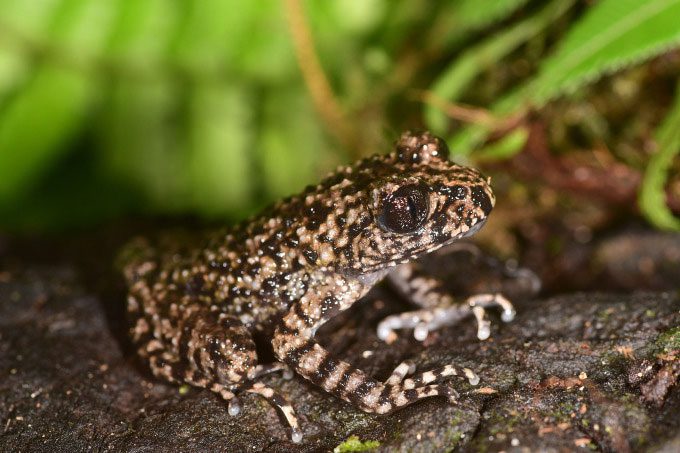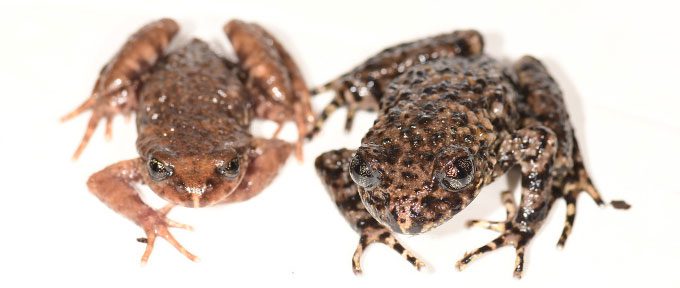A newly discovered endemic toad species has a body length of less than 4 cm, featuring round and even warts with black spots on the body, and two-tone irises. This species was found by a team of scientists at the summit of Pờ Ma Lung Mountain.
The new toad species has been named the Brother Tooth Toad (scientific name Oreolalax adelphos). Researchers from the Asian Turtle Conservation Program (ATP) under the Indo-Myanmar Conservation Organization (IMC), the National Museum of Australia, and the London Zoological Society discovered it at an elevation of over 2,900 meters on the Pờ Ma Lung Mountain in the Hoàng Liên Son range. The research was published in the journal Zootaxa in early October.

The Brother Tooth Toad found on Pờ Ma Lung Mountain, Lai Châu. (Photo: Thành Luân).
According to MSc. Nguyễn Thành Luân, the leader of the research team, there are currently 20 toad species within the genus Oreolalax recorded. Most of these are endemic to China. Only one species, the Sterling Tooth Toad (scientific name Oreolalax sterlingae), is recorded in Vietnam and is found exclusively in the Hoàng Liên Sơn range. This species is also classified as endangered on the IUCN Red List.
The new species was discovered by MSc. Luân and colleagues during a field investigation of amphibian diversity at Pờ Ma Lung Mountain in August 2023. The team collected specimens of the Oreolalax sterlingae species and several specimens exhibiting distinct morphological characteristics from previously known species in the Oreolalax genus. Morphological and genetic sequence analysis results confirmed that this is a new species.
The Brother Tooth Toad from Pờ Ma Lung has a body length of less than 4 cm, with body sizes approximately 38 mm in males and 26.2 mm in females. They feature prominent characteristics such as dark brown horizontal stripes on the thighs and shins; grayish-white or cream spots on the hips, and irises that differ in color between the upper and lower halves. The Brother Tooth Toad has slightly developed webbing between the toes of the hind limbs; the belly is gray with alternating white spots; and the head and body have round and even warts.
Currently, scientists have only found this species at the summit of Pờ Ma Lung, sharing the same habitat with the Oreolalax sterlingae species. Both species may also be distributed in Jinping, Yunnan, China. This is the second species in the Oreolalax genus discovered in Vietnam to date.

Sterling Tooth Toad (left) and Brother Tooth Toad (right) show differences when encountered in the same habitat. (Photo: Thành Luân).
This research is part of a project to conserve amphibian and reptile species in the Hoàng Liên Sơn range. Over the past 10 years, scientists have discovered six new amphibian species and one new snake species in this region. The discovery of additional new species in the northern part of the Hoàng Liên Sơn range highlights the necessity for research investigations in high-altitude areas.

Habitat at the summit of Pờ Ma Lung. (Photo: Thành Luân).
Pờ Ma Lung Mountain and other high peaks in the north are popular climbing destinations. Therefore, alongside the search, discovery, and naming of new species for science, researchers indicate that they will continue conservation activities by enhancing local management, raising awareness among the public and tourists about environmental and biodiversity protection.


















































